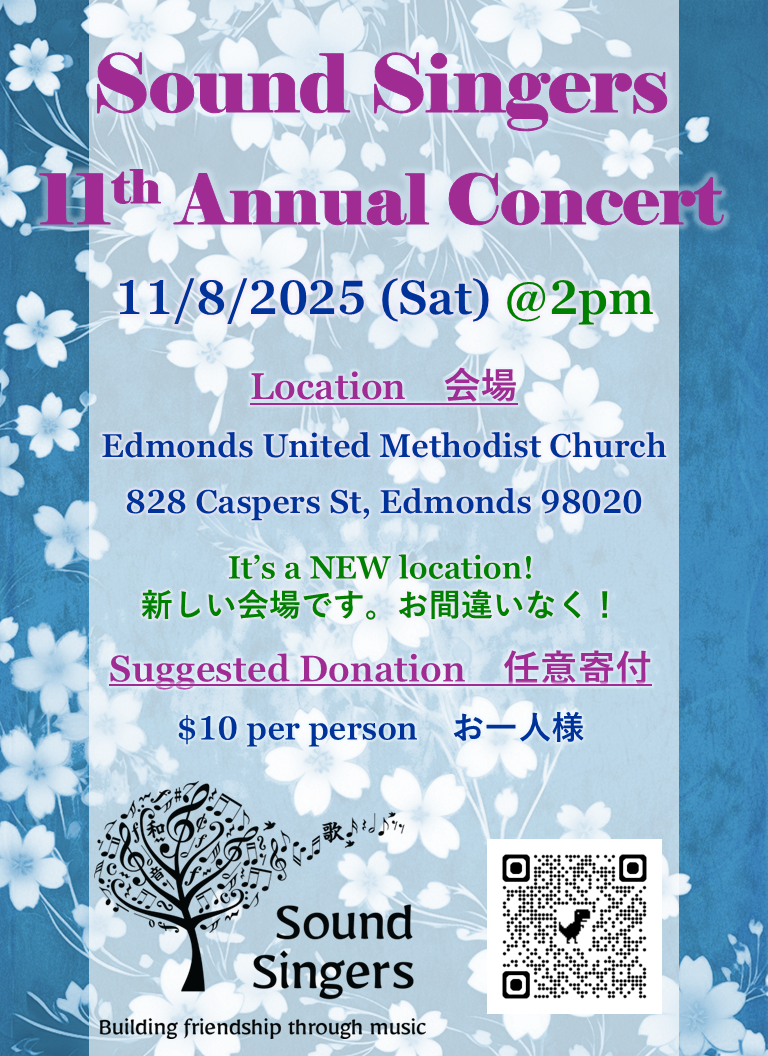
Sound Singers
♪♪♪ Building Friendship through Music ♪♪♪
A Japanese mixed choir, founded in 2009.
サウンドシンガーズは2009年に発足した日本語混声合唱団です。
2003 Annual Concert - Highlights
Our mission is to build friendship through music.
Since its inception in 2009, Sound Singers has been performing at a variety of local events and annual concerts.
Sound Singers is a 501(d)(3) non-profit organization and a proud member of the Greater Seattle Choral Consortium (“GSCC”).
私たちは音楽を通してFriendshipを築くをモットーとして活動しています。
2009年からシアトル近郊の様々なイベントや定期コンサートで演奏し活躍しています。
サウンドシンガーズは非営利団体の登録をしたグループです。
またシアトル地域の合唱団が集まるThe Greater Seattle Choral Consortiumのメンバーでもあります。
Rehearsal Location / 練習場所
We rehearse every Thursday at 7:30pm in Lynnwood, WA.
毎週木曜日 7:30pmからリンウッドで練習しています。
17321 44th Avenue West
Lynnwood, WA 98036 (Map)
We are cultural ambassadors who aim to build friendships and share Japanese culture with people from all backgrounds primarily through Japanese music.
音楽を通して日本の文化を伝え様々なバックグラウンドを持つ人たちと友好を深めていく事を目指しています。
Upcoming Events:
November 8, 2025 (Sat)
11th Annual Concert in Edmonds, WA
@Edmonds United Methodist Church ⇚ New Location!!
828 Caspers St., Edmonds, WA 98020
Doors Open 会場 @ 2pm
Suggested Donation 任意寄付 $10/person お一人様
Please come &enjoy our 11th annual concert in Edmonds!
今年で第11回目のコンサートとなります。是非お越しください!
エドモンズの新しい会場でお待ちしております!
2025 Concert Program << Click Here
Past Performances
過去の演奏ビデオ
Recent Events 最近のイベント
Harmony across Cultures 3/30/2025 @University of Washington
We participated in a benefit concert to support those affected by the 2024 earthquake on the Noto Peninsula in Japan. We raised over $2,000 for the 2024 Noto Earthquake Scholarship!
The GoFundMe site is still active—please help spread the word!
Go Fund Meのサイトはまだ開いています。是非、能登地域の方へのサポートをお願いします!
From Hiroshima to Hope 8/6/2024
Green Lake, Seattle, WA
Japan Fair 2024 7/12/2025
Bellevue, WA







